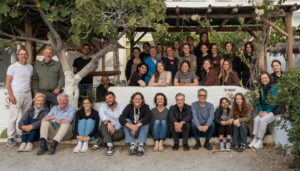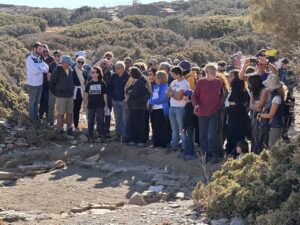
by Ivana Vetta
Archaeologist
[Note: Ivana Vetta will be returning to Andros with the Zagora team in September 2013, and would now like to share with you this post that she wrote in her time at Zagora during the 2012 field season. Another post, ‘Why slag matters’ (and it does!) will follow shortly.]
“I found it!!!” Hugh yelled from down below, the top of his head barely visible down in the deep crevice, “I have found the entrance to the mine!”
The plan had been hatched weeks ago when Archondia (archaeologist, Dr Archondia Thanos) was reading her guide book of the island and found that there were ancient iron mines near the Hellenistic Tower at Agios Petros (St Peters).
Exploring the potential iron sources on Andros is particularly important for my research on metalworking at Zagora. The previous excavations at the site, 1967-1974, and the 2012 season’s investigations noted significant evidence of iron working on and around the site. This evidence is mostly in the form of slag, the waste product produced from the smelting of metal ore and smithing of metal objects.
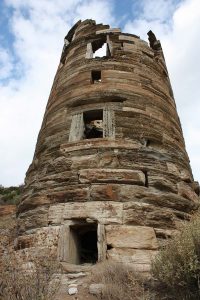
So Hugh Thomas, Jane McMahon and I decided to use one of our rare days off to visit the old iron mines on the island of Andros. First we set out to see the amazing Hellenistic Tower at Agios Petros. This stone tower is nested on the side of a small hill with views of a large valley extending out to the coast. There are several Hellenistic towers on this side of Andros, however this one is the most intact, standing at around 20m tall. It is incredible to think that this tower has stood for so long, some 2300 years!
We were worried at first that we wouldn’t be able to see the mines, that maybe they would be hidden. We had nothing to fear; a quick look out at the landscape and the mine was blatantly obvious, scarring the land with deep cuts and black slag and scree (small rock tumble) on the hill just opposite the tower. It is believed that the tower may have been used to oversee the mines. It is clear to see why, with its commanding view of the valley.
We set out in the morning in search of the iron mines we had spotted in the distance, with visions of finding the old shafts. After following the bumpy dirt road, we parked the car at the foot of the hill near where we believed the mines to be and set out across the landscape on foot.
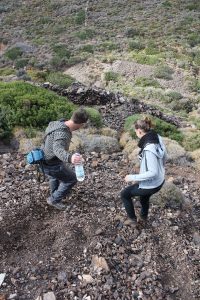
Although not far from the coastal town of Agios Petros, it was clear that this land was largely abandoned. It was completely covered with thick vegetation. The local flora, like at Zagora, was unforgiving, with every plant a sworn enemy: thorns pierced through jeans and shoes, leaving scratches and cuts on our arms. Even the goats and donkeys had forsaken this place, with barely a track visible through the thick scrub. As we battled our way through the thorny bushes, we trekked up mounds of mine waste and scree, piled high by ancient and modern miners.
Hugh scouted ahead, checking the path for the safest route. This perilous landscape was spotted with collapsed mine shafts, but due to the thick scrub, these were often barely visible. He found the first mineshaft down in a natural crevice in the schist which opened out into a cave. As Jane and I climbed down after him, the mineshaft was clearly visible at the back of the cave. The shaft seems to have been used in modern times with a field wall supporting one side and the shaft itself supported by timber framework.
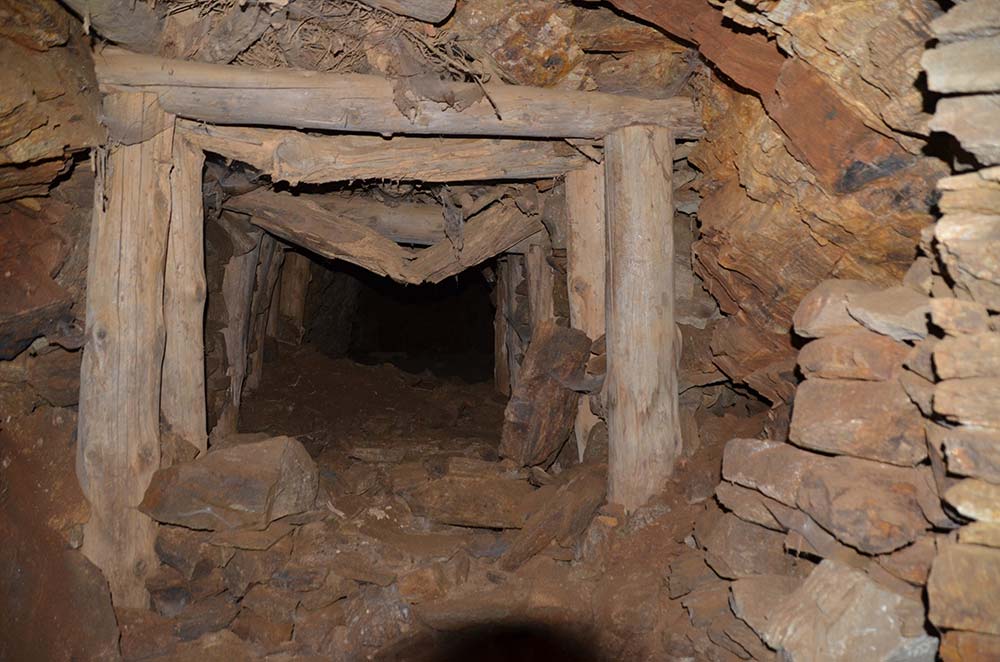
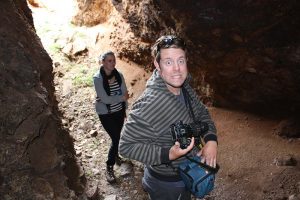
Throughout our walk we had chatted merrily about a horror film Hugh had recently seen about a lost race of superhuman cannibal cavemen. We had laughed about it at the time but as we came upon the dark mineshaft, we approached very cautiously. Of course, safety was our first priority and these mines were clearly not safe enough to enter.
After taking many photos, we continued to explore, heading towards one of the largest mineshafts visible from the road. Again the miners had taken advantage of natural caves and crevices in the bedrock. This one was situated in a large cave with light streaming in from a small aperture in the roof. The shaft itself appeared to have been much older than the first; it had completely collapsed. The natural schist in this area is very soft and one can imagine how dangerous it must have been to be a miner in this landscape.
Walking back out into the daylight we gazed out at the pockmarked terrain with the tower at Agios Petros looking down on us. We had found the mines, looked at samples of iron ore and had fun sliding down mountains of scree. Now we had to start our long and painful trek back to the car….
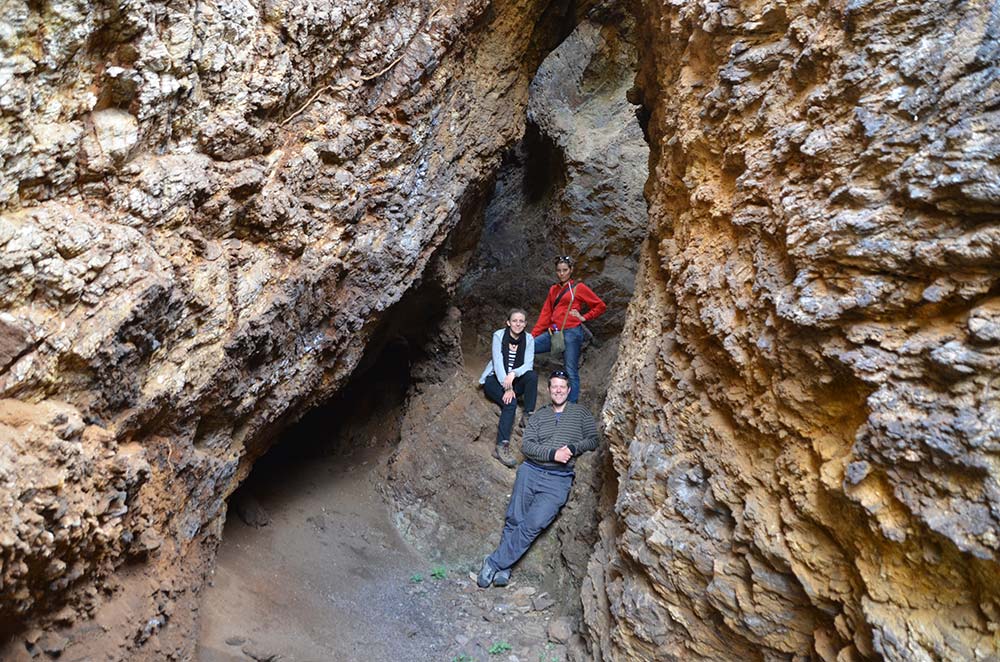 (From top) Ivana Vetta, Jane McMahon and Hugh Thomas at the entrance to one of the mines; © AAIA; photo by Hugh Thomas
(From top) Ivana Vetta, Jane McMahon and Hugh Thomas at the entrance to one of the mines; © AAIA; photo by Hugh Thomas 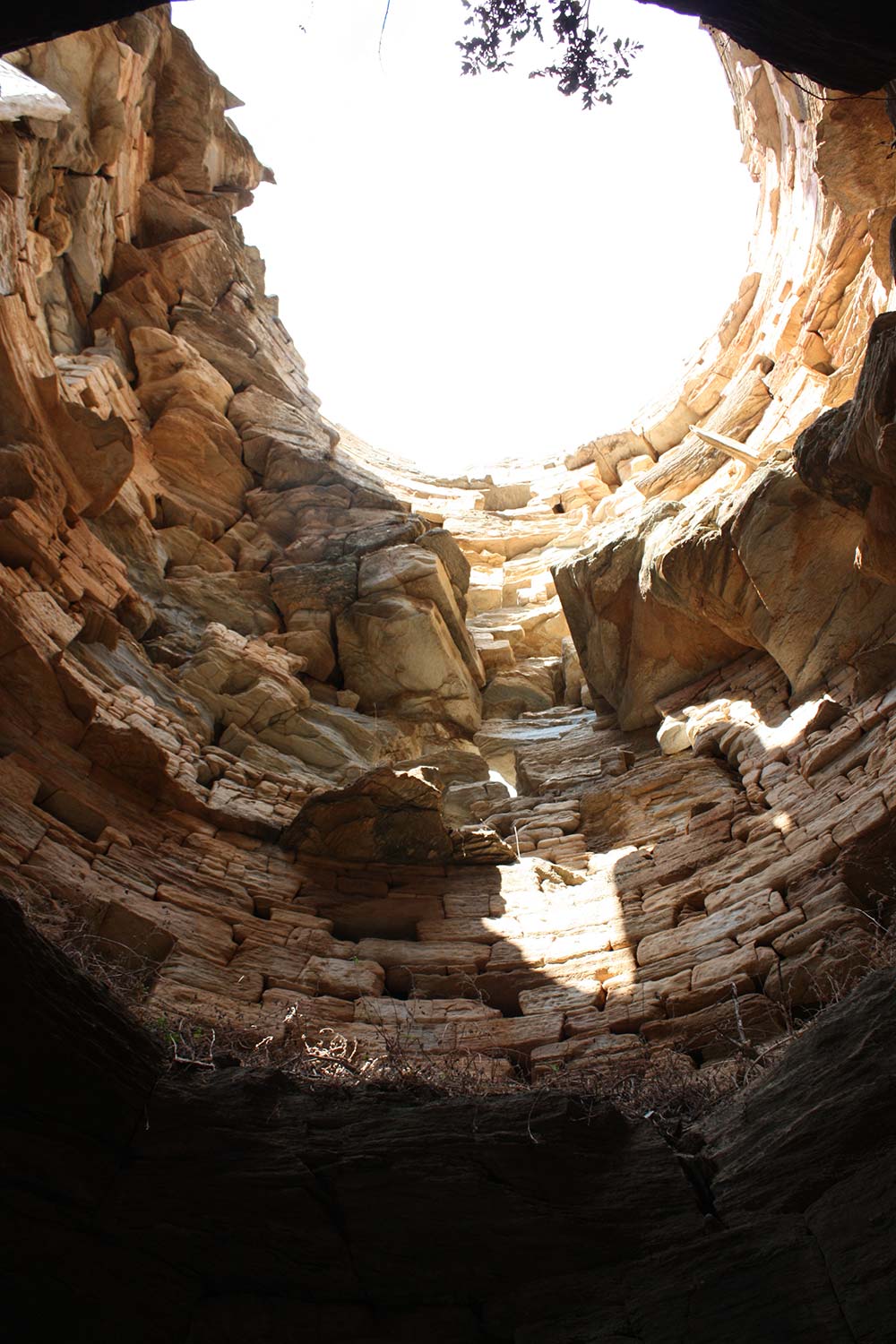 Inside Agios Petros tower; © AAIA; photo by Ivana Vetta
Inside Agios Petros tower; © AAIA; photo by Ivana Vetta 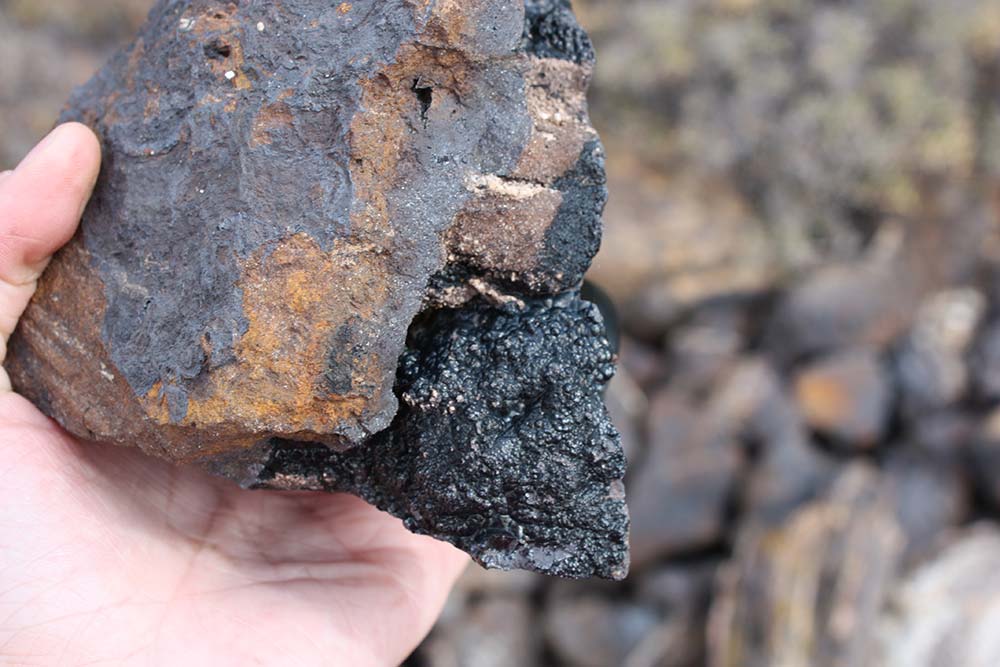 Iron ore in a rock from Agios Petros; © AAIA; photo by Hugh Thomas
Iron ore in a rock from Agios Petros; © AAIA; photo by Hugh Thomas 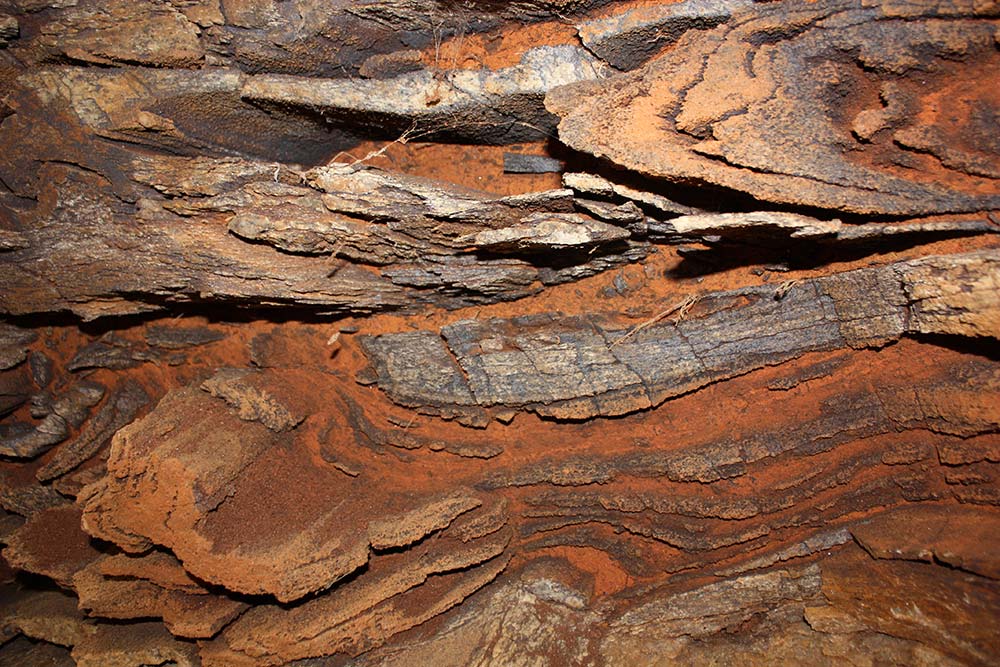 Iron ore at the entrance to one of the former mines at Agios Petros; © AAIA; photo by Ivana Vetta
Iron ore at the entrance to one of the former mines at Agios Petros; © AAIA; photo by Ivana Vetta 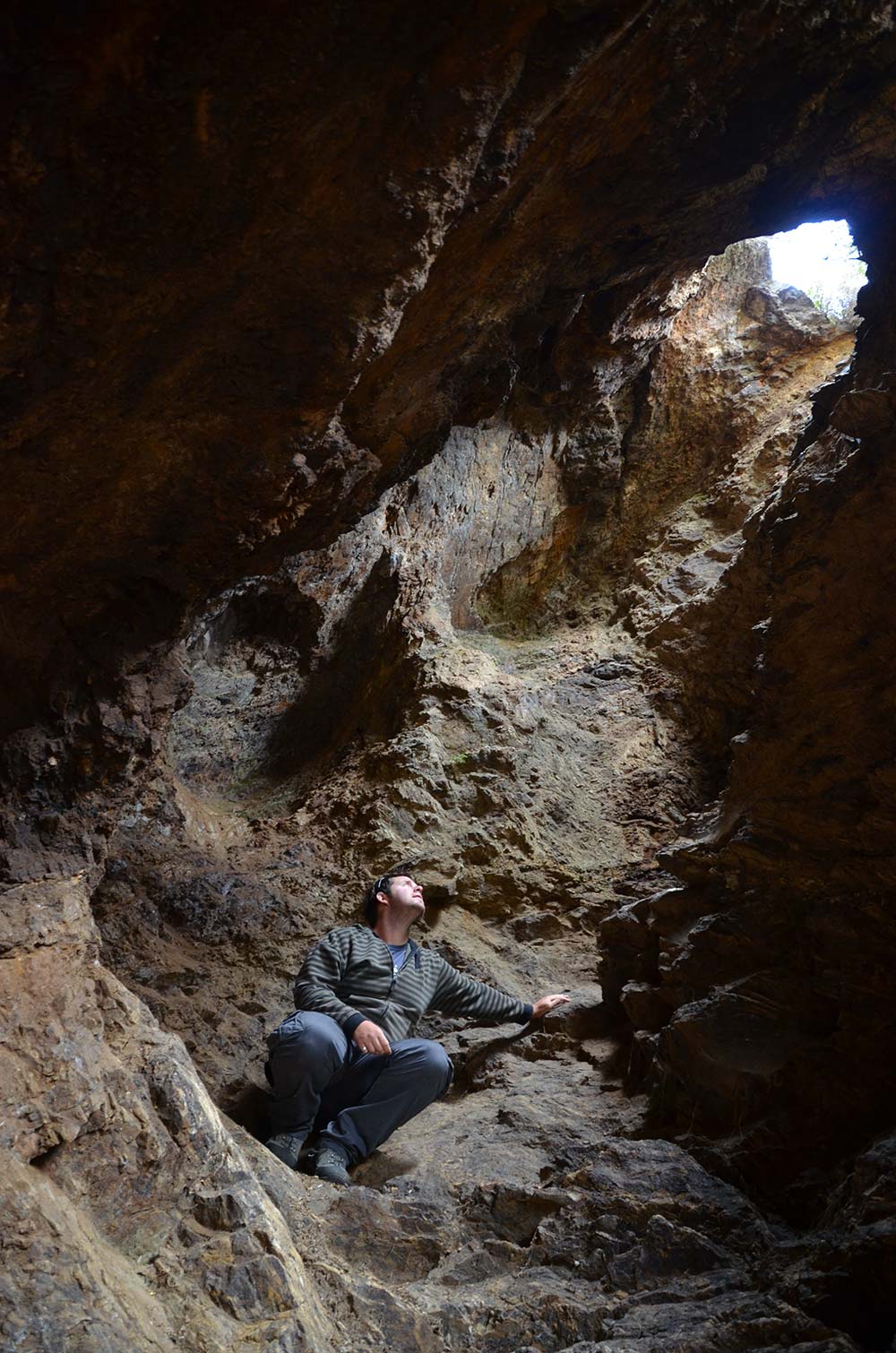 Hugh Thomas in one of the mines; © AAIA; photo by Hugh Thomas
Hugh Thomas in one of the mines; © AAIA; photo by Hugh Thomas 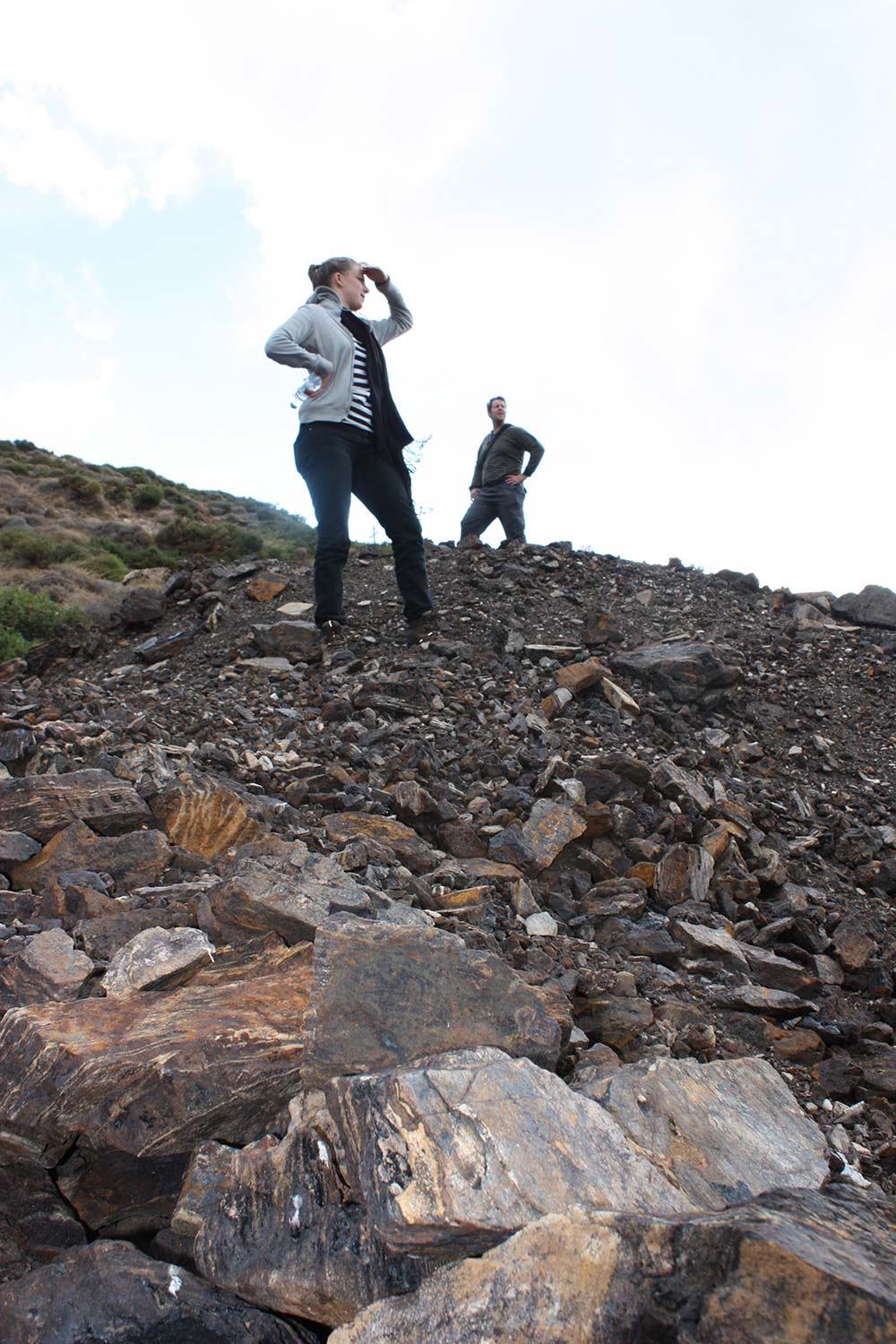 Jane McMahon and Hugh Thomas on a slope of scree at Agios Petros
Jane McMahon and Hugh Thomas on a slope of scree at Agios Petros
